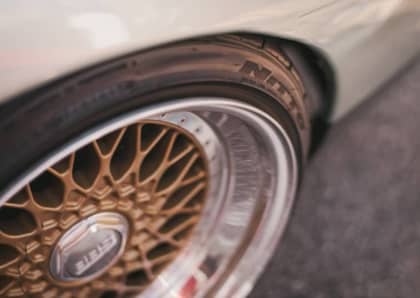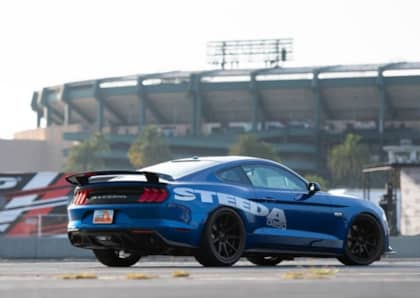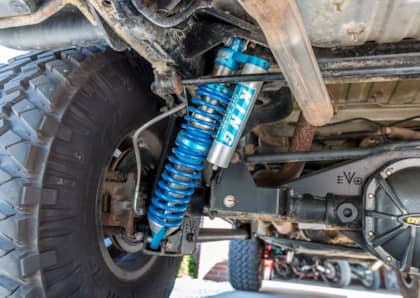I remember the first time I heard the term "static". I was at Cars & Coffee early one day with a few friends and had come across a slammed Porsche 964, a car so low that I actually wondered if it was on airbags. I looked to a friend who knew the owner and asked, “Is that car on air?” "It’s static," they responded.
Static. Is that a word for hipsters? I knew the general term and I was able to decipher that it meant it wasn’t on air, as in the suspension stays still…but had I been that far out of the scene that the term was not part of my vocabulary? When I first started getting into cars, there was no such thing as a coilover suspension. There were barely any applications for lowering springs – in order to get the right drop, my friends and I had to cut and/or heat the factory springs, depending upon the vehicle. I'll save you the old man "walking in 5 feet of snow" speech, but these were our only options during the early '90s with little aftermarket support. Air suspension was available at the time but in the form of hydraulics, something you'd see more commonly on lowriders. Chances were, if your import was on air, that you were more of a lowrider-type with a "frenched" antenna (Google that) and shaved door handles; not exactly the performance minded stuff. These days, however, it's a completely different game.
Multiple coilover manufacturers offer a variety of applications for just about any type of vehicle you can think of. Most go so far as to also offer enthusiasts a choice between "sport" or "race" lowering springs, should they not want to change out their entire suspension setup. If budget still remains a concern, there are also matching spring/upgraded shock combos to provide a good performance suspension without having to opt for full coilovers.
Air suspension has reached new levels of popularity due to recent advances in technology. Gone are the days of front/back/side to side; most are computer tuned and digitally controlled to provide not only the ride height you want, but is a fully active suspension. OEM manufacturers, such as Mercedes Benz, use air suspension in their flagship vehicles to provide comfort and performance. There are even some air suspensions that incorporate a full shock/spring setup to work in conjunction with the air, giving you both performance and the right stance in one package.
So what’s better? Supporters of each side will feverishly defend their “stance” (pun intended). Static enthusiasts claim that their ride height is more legit, in that what you see is what you get. When the car is rolling, it’s not lifted up to accommodate a “driving height”; it’s always the same height if it's driving or parked. Static performance enthusiasts will state that from a handling standpoint nothing beats a fundamental suspension. There’s a certain amount of pride that goes along with an insanely slammed vehicle that is static. I’ve even seen stickers that say “bags are for groceries”.
One of the problems with static cars is in the very definition of the word itself, meaning they don’t "move". You can’t air up over speed bumps or tune damping on the fly. This can pose its obvious challenges, but is also part of a static vehicle's charm.
The standard for most tuned cars has always kept them static, but as with anything, times change. Air supporters will argue that having infinite adaptability and overall usability is what makes air suspension superior. Air gives you the ability to completely pancake a car to a level that realistically a static car cannot achieve. The technology is cutting edge as well, with sensors that provide feedback for auto leveling that helps on the track or when parked. Gone are the days of completely blowing out an air bag and losing your suspension at speed. Most systems constantly monitor air pressure and rely on a spring/shock combo along with a fail safe to (hopefully) prevent any potential blow-outs.
One of the major drawbacks of air systems, though, is cost. Most systems can easily run twice as much as your standard coilover setup, which doesn’t include installation. Applications are not as widespread either, so you may be hard pressed to find an air setup for your McLaren P1 - not that it would really need it.
This debate is likely to continue for years to come, just like it has for those arguing naturally-aspirated versus turbocharged power. Whether your car is riding static or on air, there are so many options that it certainly beats walking through 5 feet of snow - so take advantage of them!



















